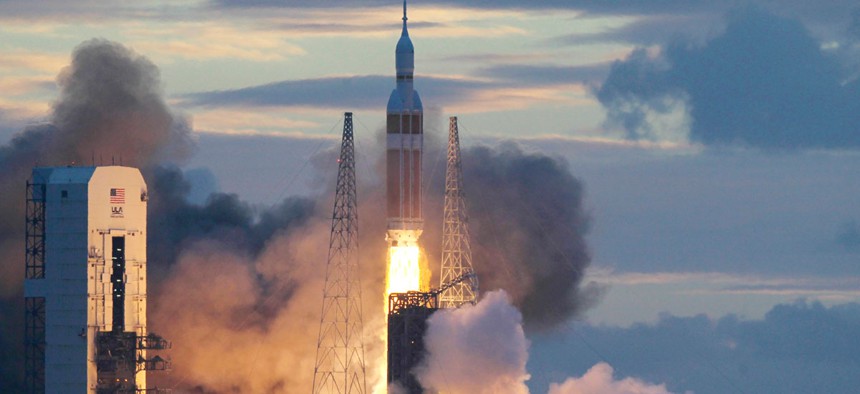NASA Is Working on Super-Fast Spaceship Technology That Defies the Laws of Physics

A NASA Orion capsule on top of a Delta IV rocket lifts off on its first unmanned orbital test flight from Complex 37 B at the Cape Canaveral Air Force Station, Friday, Dec. 5, 2014 Marta Lavandier/AP
The propulsion system, known as the EmDrive, was conceived around the turn of the millennium by a British engineer named Roger Shawyer.
NASA researchers have made progress on a new way to power a spaceship that could eventually enable fast travel to the outer reaches of our solar system. The research findings fly in the face of our understanding up until now of physics. Indeed, the results, which have now been seen similarly in several studies, appear to contradict Newton’s third law of physics.
The propulsion system, known as the EmDrive, was conceived around the turn of the millennium by a British engineer named Roger Shawyer. The EmDrive is an electromagnetic propulsion drive that purports to generate thrust by bouncing microwaves in a closed container. By the principles of classical physics, this ought to be impossible because of the law of conservation of momentum: every action has an equal and opposite reaction.
For example, a fuel-powered rocket builds momentum by shooting propellant out its back, which pushes it forward. (You’ll experience the same effect if you try to throw a ball on roller skates.) But the EmDrive seems to generate momentum out of thin air.
Shawyer’s initial results were deservedly met with extreme skepticism—after all, what he said he’d found should have been impossible. But in 2010, Chinese researchers reported that they had generated thrust from an EmDrive, and in 2014, a NASA propulsion lab known as NASA Eagleworks found the same. Still, none of these experiments were conducted in a vacuum, which made them more prone to error and therefore not conclusive.
But now, a researcher with NASA Eagleworks has reported that the group has been able to generate thrust from an EmDrive in a vacuum. That’s a big piece of evidence in favor of this research’s validity, and an indicator that it could one day be possible to build spaceships that use the drives.
And what if we can? Well, the EmDrives would theoretically allow spaceships to accelerate to much higher speeds, shrinking the vastness of space enough to make interplanetary exploration feasible.
For example, as Eagleworks research lead Harold White and Kent Joosten write in a 2014 paper on human space exploration (pdf), spaceships outfitted with EmDrives and onboard nuclear power instead of jet fuel could take passengers to Mars in 75 days, or to the Saturnian moon of Titan in nine months. That’s a quick jaunt compared with current spacecraft, which now take nine months to get to Mars, and three to six years to reach Saturn.
NEXT STORY: Jeff Bezos Has a Rocket Now, too





